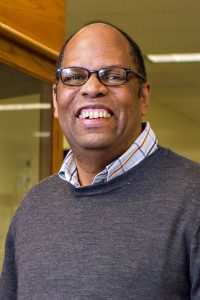
Charles Nilon, professor emeritus at the University of Missouri’s School of Natural Resources, has spent over 35 years studying urban wildlife and human interactions with ecological spaces. His latest collaboration, featured in the Nature Cities article A Walk in the Park? Not for Everyone: Addressing Inequality in Access to Social, Environmental, and Health Amenities in US Urban Parks, examines disparities in park access across the United States.
Nilon’s work focuses on understanding how plants and animals use urban spaces and how people connect with those ecosystems. The recent research stems from a 2017 study and was expanded through a four-day workshop at the National Socio-Environmental Synthesis Center, funded by the National Science Foundation. The workshop brought together researchers to analyze data from a Trust for Public Land’s public lands database, exploring how park access varies based on socio-economic factors.

“We said, ‘Wow, there’s this database, and what if we brought people together to talk about how you could use some of this data to really answer some of these questions that might be of use to park managers and park planners in cities?’” Nilon explained. “The idea was, what could we do as a research group that would really impact what cities and local governments do to manage these parks?”
A key component of the study involved assessing accessibility through the concept of a ‘walkshed’ — the distance an individual can walk to a park within 10 minutes of their home. The research analyzed air quality, noise levels, bird varieties, water features, and other park characteristics to understand how different communities experience and access urban green spaces.
“What we were trying to figure out first was how access might vary based on socio-economic barriers,” Nilon said. “So we looked at primarily things like income, education, all those kinds of things, and we also looked at race and ethnicity as part of this because there is a lot of interest in that.”
The findings highlighted significant regional differences in park access, with notable disparities in areas with large Black populations in the Southeast and Latino populations in the Southwest. While some cities showed differences in access based on race and ethnicity, others displayed more pronounced income-related disparities.
“The most important thing that I got out of this is that not everyone has access to the same kind of resources across the city,” Nilon emphasized. “If you think about the sorts of natural resources and amenities that exist in our parks, not everyone has equal access to them. The real challenge is that, of course, parks are different because they are designed for different needs.”
Nilon pointed to Douglas Park in Columbia as an example.
“That’s a park that doesn’t really have access to all these natural resources, but, of course, it’s a park that has a pool and basketball courts, and that’s what people in that neighborhood value,” he said. “So we looked at it as: this data could be a tool that really helps cities, park departments, and local governments think more clearly about what kinds of resources they want to provide in different parks.”
The Trust for Public Land is now considering using this research to improve its database to further inform city planning and resource distribution.
“I got excited about how to take all of this information that we know about parks and plants and animals and really make it useful to people,” Nilon said.
With a lifelong passion for urban ecology, Nilon sees this research as an opportunity to bridge the gap between science and city planning, ensuring that all communities have access to the benefits of urban nature.
“Parks span from playgrounds to places like Rock Bridge, which is a big natural area,” he said. “What I got really excited about was the chance to work on a project with people who knew a lot about parks and people who knew a lot about developing these tools and doing some actionable science.”
By shedding light on the socio-economic and racial disparities in park access, Nilon and his colleagues aim to help urban planners create accessible green spaces for all.